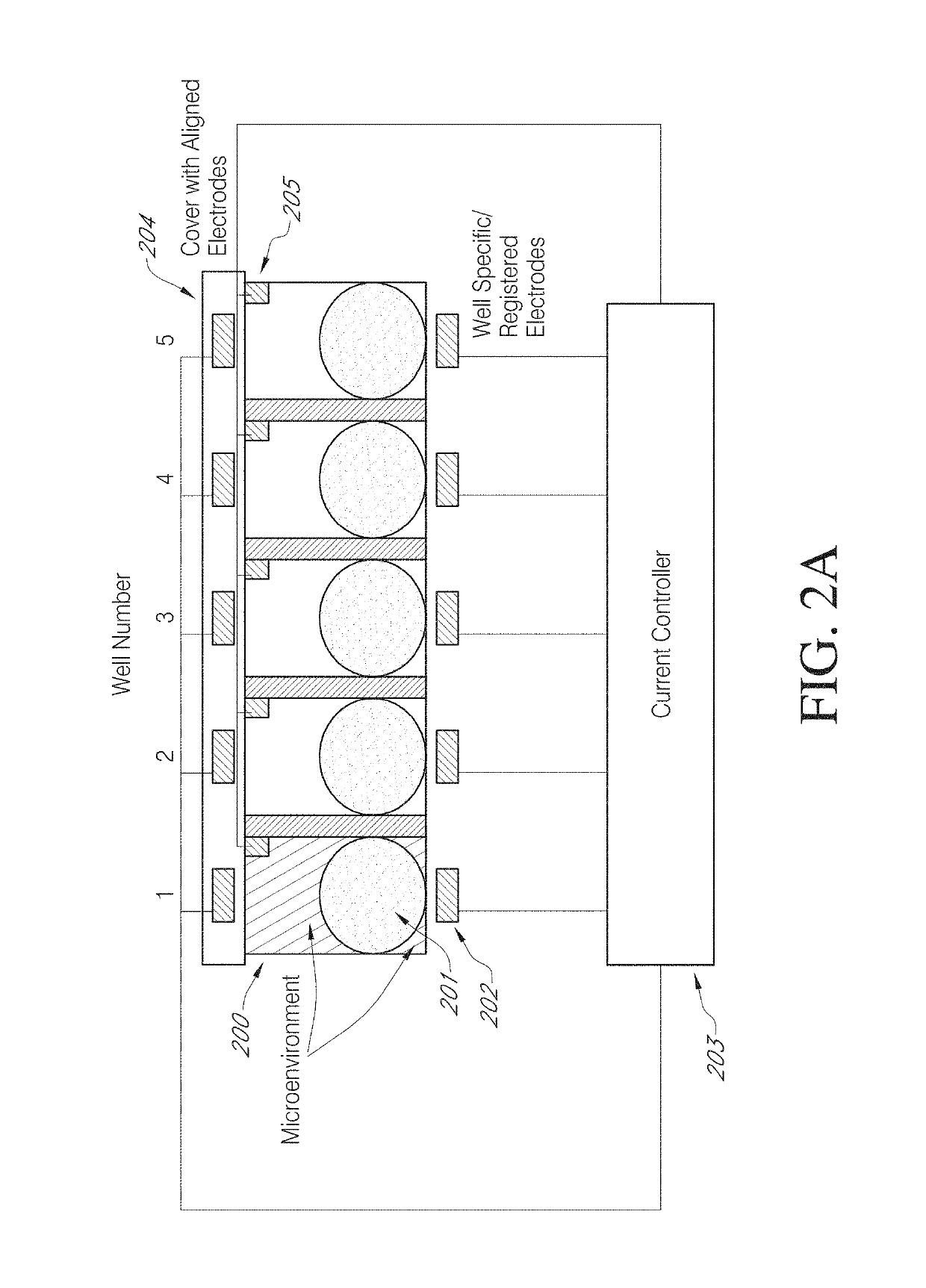High efficiency, small volume nucleic acid synthesis
a nucleic acid synthesis and small volume technology, applied in the field of compositions and methods for the production of nucleic acid molecules, can solve the problems of high cost of automated machines with limited throughput, insufficient template nucleic acid, and inability to generate large de novo nucleic acid molecules,
- Summary
- Abstract
- Description
- Claims
- Application Information
AI Technical Summary
Benefits of technology
Problems solved by technology
Method used
Image
Examples
example 1a
d Porous Polystyrene Particles Containing Amine Functionality, 32 μm, 4 Mole % Aminostyrene
[0690]1,380 g of water, 179 g of bis(2-ethylhexyl)adipate, 230 g of acetone and 7 g of sodium dodecyl sulphate (SDS) were emulsified for 5 minutes by using an ULTRA TURRAX® mixer and homogenized in a two stage Manton Gaulin homogenizer at 400 kg / cm3 in the first stage and 100 kg / cm3 in the second stage for 5-8 minutes.
[0691]After homogenization, 275 g of the emulsion was charged with a seed suspension of monodisperse oligomeric styrene particles having a particle diameter of 5 μm. 75 g of seed suspension containing 7 g of oligomeric particles and 68 g of water were used.
[0692]After stirring at 45° C. for 1 day, 59.5 g of the seed suspension containing activated seed particles was charged with 1,467.4 g of an emulsion containing 1,063.9 g of water, 1.6 g of METHOCEL™ K-100 (Dow Chemical Co.), 0.6 g of sodium dodecyl sulphate (SDS), 56.5 g of divinylbenzene (DVB) (i.e., 80% by weight DVB, 20% by...
example 1b
d Porous Polystyrene Particles Containing Amine Functionality, 32 μm, 11 Mole % Aminostyrene
[0695]1,380 g of water, 179 g of bis(2-ethylhexyl)adipate, 230 g of acetone and 7 g of sodium dodecyl sulphate (SDS) were emulsified for 5 minutes by using an ULTRA TURRAX® mixer and homogenized in a two stage Manton Gaulin homogenizer at 400 kg / cm3 in the first stage and 100 kg / cm3 in the second stage for 5-8 minutes.
[0696]After homogenization, 275 g of the emulsion was charged with a seed suspension of monodisperse oligomeric styrene particles having a particle diameter of 5 μm. 75 g of seed suspension containing 7 g of oligomeric particles and 68 g of water were used.
[0697]After stirring at 45° C. for 1 day, 59.5 g of the seed suspension containing activated seed particles was charged with 1,453.3 g of an emulsion containing 986.7 g of water, 1.6 g of METHOCEL™ K-100 (Dow Chemical Co.), 0.6 g of sodium dodecyl sulphate (SDS), 56.3 g of divinylbenzene (DVB) (i.e., 80% by weight DVB, 20% by ...
example 2
Conjugation of UNYLINKER™ to Amine Functionalized Particles
[0700]24 g of the particles described in Example 1 in 406 g of toluene were charged to a reactor equipped with a stirrer and heating jacket. Under stirring, 1.8 g of N,N′-diisopropylcarbodiimide (DIC) was added. After 5 minutes, 5.6 g of UNYLINKER™ (ChemGenes, Wilmington, Mass.) succinate triethylammonium salt dissolved in 50 g of toluene was also introduced and the reaction stirred at 25° C. for 20 hours.
[0701]Upon completion, the particles were allowed to settle and the supernatant was removed. This was followed by addition of 0.5 liters of toluene and the suspension was stirred for 30 minutes. This washing process was repeated twice and then three more times using 0.5 liters of tetrahydrofuran (THF) instead of toluene.
[0702]The linker loading of the particles was confirmed to be within a range of 15-100 μmol / g by cleavage of the DMT protecting group from the UNYLINKER™ using trichloroacetic acid and subsequent analysis by...
PUM
| Property | Measurement | Unit |
|---|---|---|
| depth | aaaaa | aaaaa |
| diameter | aaaaa | aaaaa |
| diameter | aaaaa | aaaaa |
Abstract
Description
Claims
Application Information
 Login to View More
Login to View More - R&D
- Intellectual Property
- Life Sciences
- Materials
- Tech Scout
- Unparalleled Data Quality
- Higher Quality Content
- 60% Fewer Hallucinations
Browse by: Latest US Patents, China's latest patents, Technical Efficacy Thesaurus, Application Domain, Technology Topic, Popular Technical Reports.
© 2025 PatSnap. All rights reserved.Legal|Privacy policy|Modern Slavery Act Transparency Statement|Sitemap|About US| Contact US: help@patsnap.com



